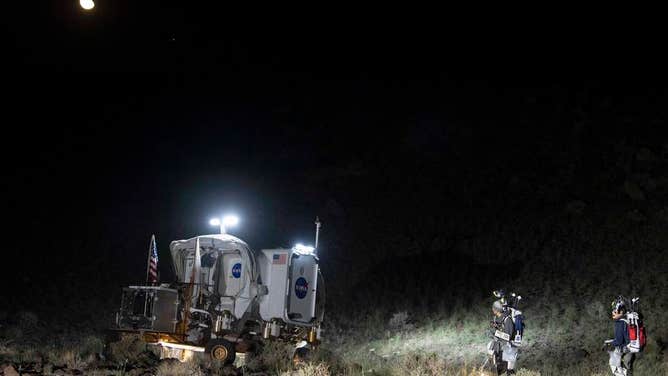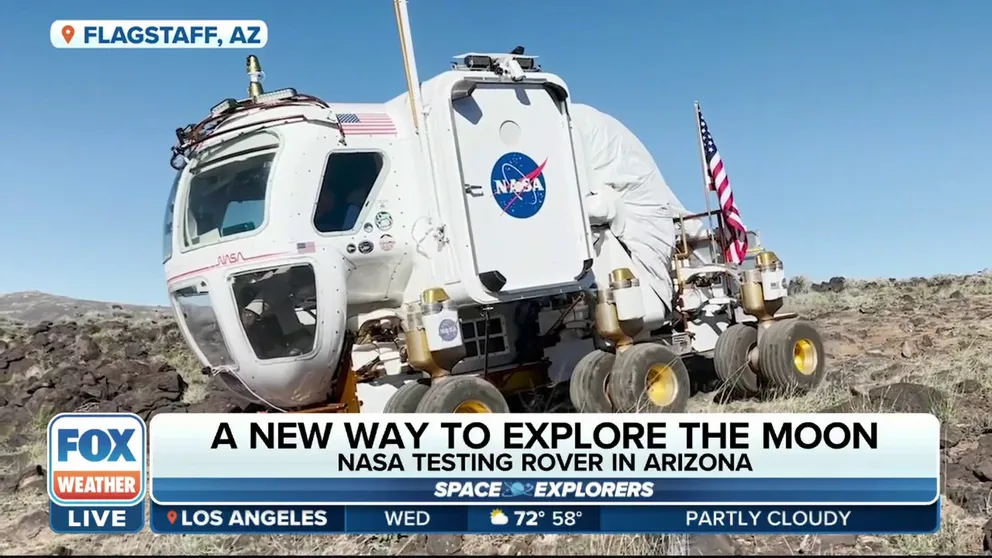NASA conducts lunar rover, moonwalking tests in Arizona to prepare for moon landing
During the tests, astronauts conducted four 'moonwalks' in the Arizona desert that mirror the Artemis III astronaut operations for the first human landing in 2025.
NASA testing moon rover, moonwalking and lunar operations in Arizona
To prepare for the 2025 moon landing NASA engineers and astronauts have been conducting field tests with lunar rovers and simulated moonwalks in Arizona. The desert offers many characteristics to a lunar environment.
FLAGSTAFF, Ariz. – NASA astronauts and engineers have been preparing for the exploration of the lunar South Pole in the northern Arizona desert.
The space agency is targeting 2025 to return humans to the moon for the first time in 50 years. In November, NASA plans to try for a third time to launch the Artemis 1 mission from Kennedy Space Center in Florida. The test flight of the SLS moon rocket will lay the groundwork for a human landing in the coming years.
In the meantime, astronauts, scientists and engineers are testing equipment and lunar operations in Flagstaff, Arizona. Most recently, during two analog missions known as the Joint Extravehicular Activity and Human Surface Mobility Program Test Team Field Test and Desert Research and Technology Studies (RATS), teams worked through operations in a simulated lunar environment.
NASA ORDERS $2 BILLION WORTH OF SPACECRAFT FOR FUTURE ARTEMIS MISSIONS
During the October tests, astronauts conducted four "moonwalks" in the Arizona desert that mirror the Artemis III astronaut operations for the first human landing in a few years. To simulate the darkness of the lunar South Pole, the moonwalks happened at night with the astronauts wearing pressurized spacesuits and taking samples as they will on the moon.
"We are contributing in a very small way to determining how to explore the lunar surface and then onto Mars," NASA Dessert RATS Mission Manager Barbara Janoiko told FOX News.

NASA and JAXA teams conducting Artemis field tests in Arizona with astronauts, engineers and scientists to practice in a simulated lunar surface environment. (Credits: NASA/William Stafford)
Just last week, engineers with NASA and the Japanese Space Agency (JAXA) tested lunar rovers designed for astronauts at the Black Point Lava Flow.
The Arizona desert landscape about one hour from the Grand Canyon offers ideal rough terrain to test the space exploration vehicle that can crawl over rocks by "crab walking."
JAXA astronauts Akihiko Hoshide and Norishige Kanai, and JAXA expert Naofumi Ikeda along with NASA astronauts Jessica Meir and Stan Love and NASA engineer Sarah Shull took turns in pairs of two living in and operating the pressurized rover over the course of three days.
Unlike the lunar buggy-style rovers from the Apollo astronaut missions, the Artemis vehicles are meant for astronauts to stay in for up to two weeks as they conduct long-range geology fieldwork on the moon.
The Artemis program astronauts will explore the dark regions of the moon's South Pole, where scientists believe there is water ice that can be harvested for water and rocket fuel. This is an unexplored region of the moon for humans, the six Apollo missions landed in the sunlit area near the equator.
"There's a whole different set of geology and listens to be learned a whole different part of the moon than before," Janoiko said.
According to NASA, learning how to operate extended missions in the moon rover is key for later Artemis missions after 2030.
